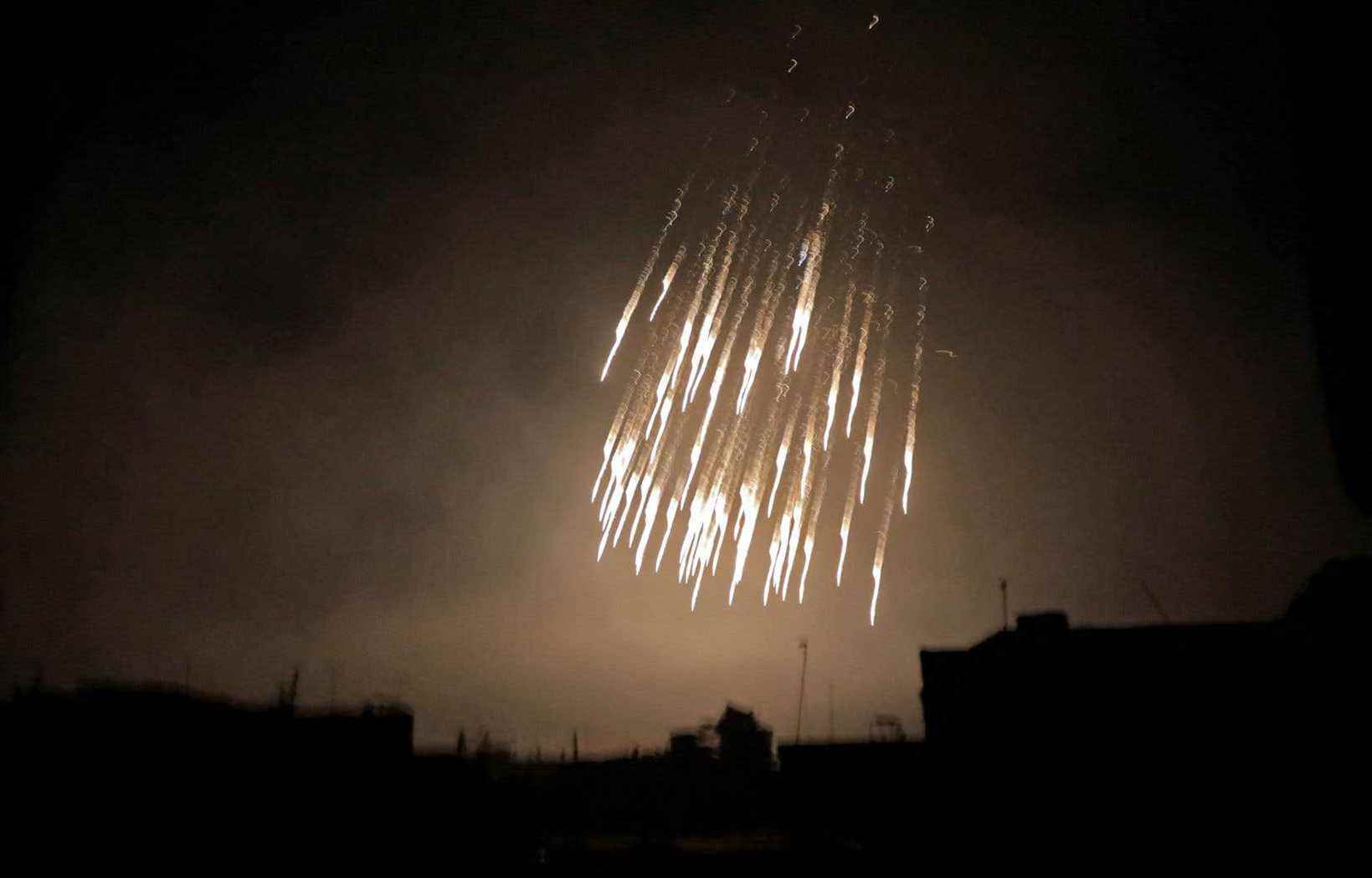Allegations and images evoking the potential use of white phosphorus ammunition in Ukraine have been relayed by several elected officials in the country at war, who fear that these attacks will target civilian populations, which would violate international law.
In Irpin, Popasna and Kramatorsk, Ukrainian elected officials have reported the use of white phosphorus ammunition by the Russian army, allegations which have not, however, been confirmed by independent sources.
The Russian army is said to have used this type of incendiary weapon on Tuesday evening in the northwestern suburbs of kyiv, near Hostomel and the city of Irpin, said the mayor of the latter, Oleksandr Markouchine, in a publication on his Telegram account. In photos shared by the chosen one, we could see a black sky dotted with sparkling white lines, like those produced by white phosphorus when it burns.
“The use of such weapons by enemy troops against civilians is a crime against humanity,” added the mayor of Irpin.
“It’s a crime against humanity” and Russian President Vladimir Putin must “pay” the price, Ukrainian MP Inna Sovsun also reacted on Twitter on Wednesday.
Not prohibited
Unlike chemical weapons, the use of which is prohibited by international conventions, white phosphorus falls into the category of incendiary weapons which are less strictly regulated. This chemical element can for example be used to illuminate enemy positions in the context of night operations or to create a smoke screen aimed at limiting the visibility of the enemy.
“It’s an incendiary weapon, it’s not a chemical weapon in the usual sense of the word. It can be used to set buildings on fire” or against soldiers, explains the specialist in military sociology and professor at the Canadian Forces College, Éric Ouellet, in an interview with the Homework Wednesday.
The Protocol on the Prohibition or Restriction of the Use of Incendiary Weapons, adopted in 1980 in Geneva, nevertheless prohibits “in all circumstances” the knowing use of incendiary weapons against civilian populations or even at military bases. located near residential areas.
“Any attack against civilian populations is a war crime”, whether the weapon used is white phosphorus or missiles, recalls Mr. Ouellet. The expert also believes that it is only a matter of time before the West begins to create a special tribunal against Russia to try it for war crimes potentially committed in Ukraine. “It’s coming in the next few weeks,” foresees Mr. Ouellet.
The Associate Vice-Rector for Research at the Royal Military College of Canada, Pierre Jolicoeur, wonders if the use of white phosphorus by Russia in Ukraine – if it is confirmed – would not aim “to bend” NATO leaders, who are meeting this week to determine new sanctions to impose on Moscow. Russia would thus like to show that it is “ready to go all the way, whatever the consequences in Ukraine”, evokes Mr. Jolicoeur.
A “cruel” weapon
The governor of Luhansk oblast, Serhiy Haidai, also reported on Wednesday the use of phosphorus ammunition in the Ukrainian town of Popasna, in the east of the country.
“They don’t care about victims and destruction, the more there is for them, the better, because they are murderers”, wrote the elected official on his Facebook page, about the Russian army.
According to Human Rights Watch, incendiary weapons are “among the most cruel weapons used in armed conflicts today”. Russia notably used it between 1994 and 1996 in Chechnya, while the United States used white phosphorus in the early 2000s in Iraq. Phosphorus bombs were also reportedly used in Syria in 2015 and 2018 and by Israel in the Gaza Strip in 2008.
However, when civilians are targeted by these incendiary weapons, the consequences can be dramatic. After combustion, white phosphorus can cause “severe thermal and chemical burns that often penetrate bone, are slow to heal, and are prone to infection,” Human Rights Watch said in a 2018 explanatory document. Even people who have less direct contact with white phosphorus may suffer repercussions, particularly at the respiratory level.
